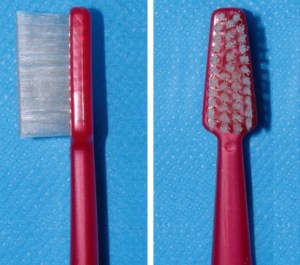Tips for Picking the Right Toothbrush
How should a toothbrush be chosen? At times, it’s difficult. It might be challenging to know what to look for when buying a toothbrush because there are so many options available.
It is crucial to practice good dental hygiene because it reflects well on your general health. Brushing your teeth is an essential part of your daily routine, and maintaining good oral health can help you prevent a variety of diseases that are not directly related to dentistry. It goes without saying that everyone uses a toothbrush as part of their dental hygiene routine, but which brush is best for you?

Have you ever questioned which toothbrush to buy when you were in front of a display case of them in a store? Everyone has experienced it. Asking your dentist and hygienist for recommendations is a wonderful place to start.
Since every person has a different mouth, every toothbrush will also have a different structure.
Here are some additional general pointers on what to look for:
Toothbrush type
Since every person has a different mouth, every toothbrush will also have a different structure.

Cheaper toothbrushes are typically made of hard plastic. Their bristles can be hard and can cause damage to the gums. Soft-bristled toothbrushes or those with a combination of hard and soft bristles are a better option. If you use electric or battery-operated toothbrushes, you’ll find that they are available with both types of bristles.
The usual toothbrush is cylindrical in shape, but there are also other shapes of toothbrushes:
- The side is flattened. This shape allows the brush to be held and to move freely.

2. The brush handle that widens at the bottom: It is easier to hold the brush this way because the widened base prevents it from slipping out of your hand.
- Multi-level brushes: These are two or three-level toothbrushes with bristles of different heights and lengths. These brushes clean deep into the mouth (between teeth and in interdental spaces).
Brushes with a handle that turns right to the brush head (at a 90-degree angle): Such a brush makes it easier to clean hard-to-reach places because you can hold it differently while cleaning.
- Vibration toothbrushes: These brushes have an electric motor that moves them back and forth.

They are supposed to make cleaning teeth easier, but studies have not shown that they give better results than manual toothbrushes. You should only use these brushes if you can not use manual ones for some reason. If you buy one, remember to turn off its vibration function when cleaning your teeth! It is important not to brush your gums too vigorously with such brushes, as this could damage them.
Many different toothbrush shapes exist, but they all serve the same primary function.
CHOOSE SMOOTH BRISTLED BRUSHES.
Even though you might think your medium or hard bristle brush cleans your teeth more thoroughly, studies show that soft-bristled brushes are ultimately more beneficial. Softer bristles are gentle on sensitive gums and effective at removing dangerous bacteria and plaque. Depending on how vigorously you wash your teeth and how sturdy your teeth are, medium-and hard-bristled brushes could really damage your gums, tooth enamel, and root surface.
Toothbrush Size
When selecting a toothbrush size, think about how easy it will be to maneuver. A smaller head is best for getting to hard-to-reach areas in your mouth, such as the back teeth and your wisdom teeth if they have emerged through the gums.
Toothbrush Brand
The brand of your toothbrush is less important than the other factors we’ve discussed, but there are some well-known brands that have an excellent reputation for quality. Check with your dentist for recommendations when it comes to choosing a brand.
Remember that regular replacement of toothbrushes contributes to maintaining a consistently high level of oral hygiene because clinical research shows a new toothbrush can remove up to 30% more plaque than one that’s three months old.
By: Obed Mprah Octere





